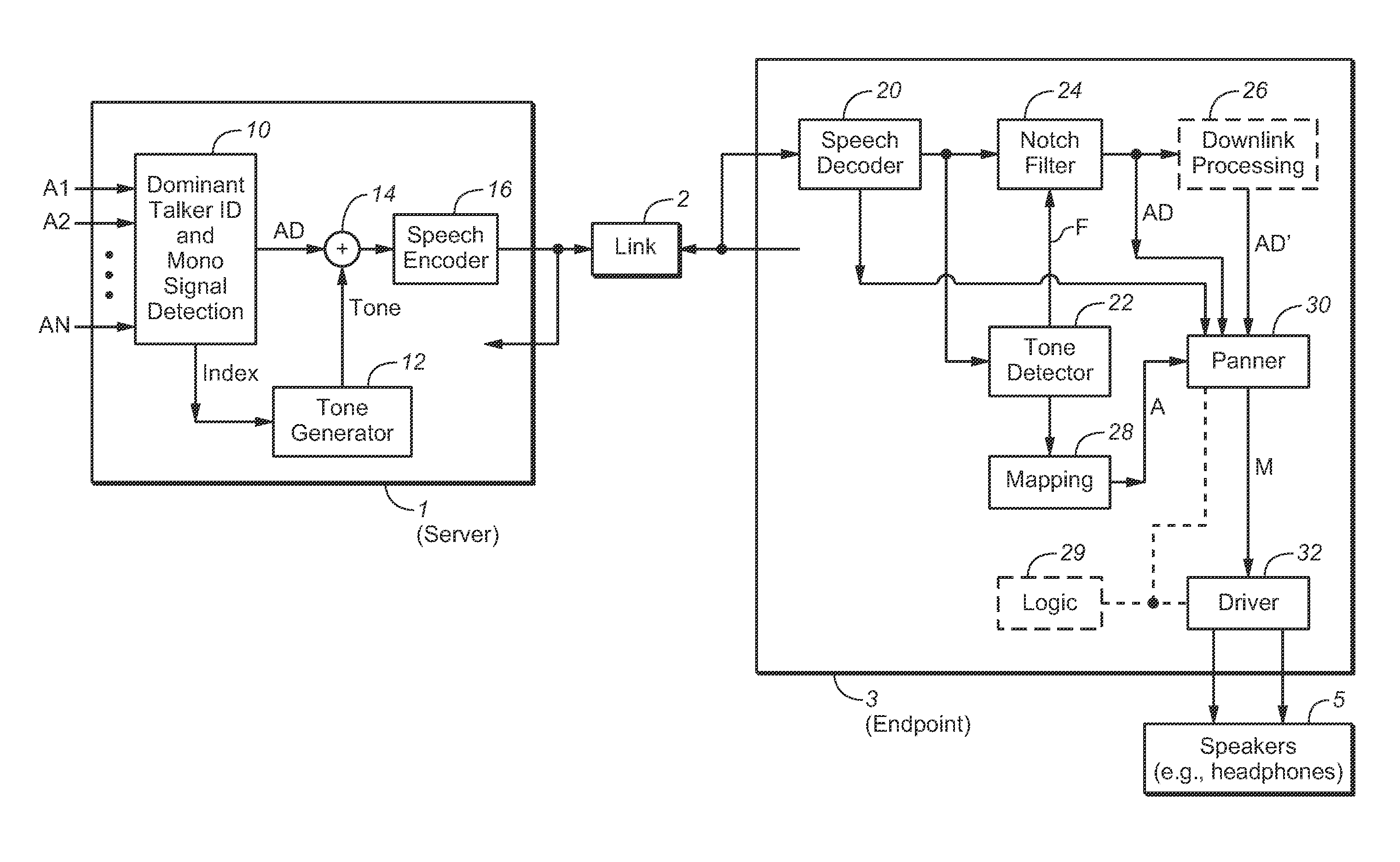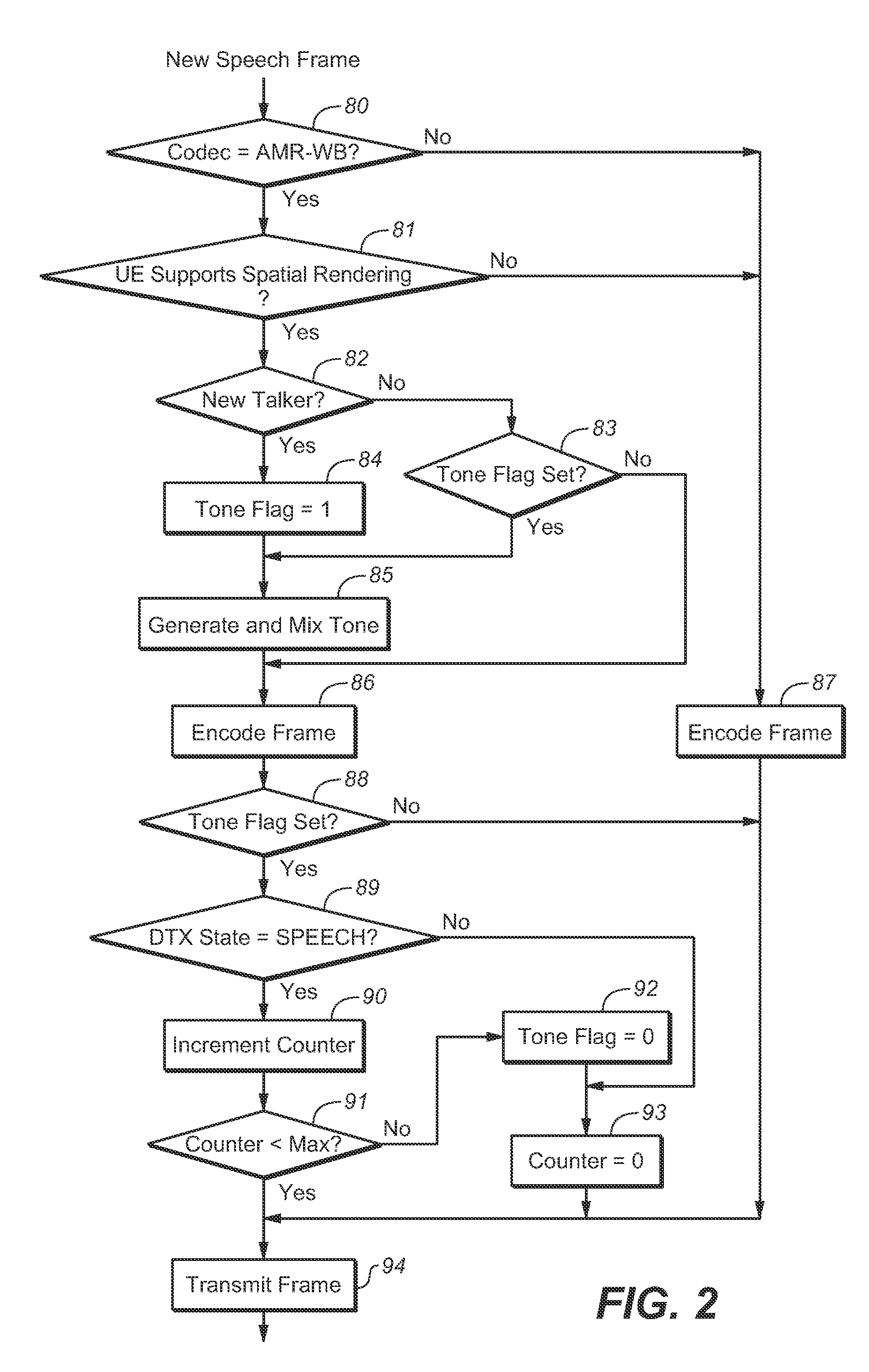Teleconferencing using monophonic audio mixed with positional metadata
a monophonic audio and metadata technology, applied in the field of teleconferencing using monophonic audio mixed with positional metadata, can solve the problems of participant's inability to benefit from any spatial voice rendering technology that might otherwise improve the user's experience, conventional decoders, and participants who cannot implement protocol implementation. the effect of improving the user's experience of the conference call
- Summary
- Abstract
- Description
- Claims
- Application Information
AI Technical Summary
Benefits of technology
Problems solved by technology
Method used
Image
Examples
Embodiment Construction
[0038]Many embodiments of the present invention are technologically possible. It will be apparent to those of ordinary skill in the art from the present disclosure how to implement them. Embodiments of the inventive system and method will be described with reference to FIGS. 1, 2, and 3.
[0039]FIG. 1 is a simplified block diagram of an embodiment of the inventive teleconferencing system, showing logical components of the signal path. The system comprises nodes (teleconferencing server 1 and endpoint 3, and optionally other endpoints) coupled to each other by link 2. Each of the endpoints is a telephone system (e.g., a telephone). In typical implementations, link 2 is a link (or access network) of the type employed by a conventional Voice over Internet Protocol (VOIP) system, data network, or telephone network (e.g., any conventional telephone network) to implement data transfer between telephone systems. In typical use of the system, users of at least two of the endpoints are partici...
PUM
 Login to View More
Login to View More Abstract
Description
Claims
Application Information
 Login to View More
Login to View More - R&D
- Intellectual Property
- Life Sciences
- Materials
- Tech Scout
- Unparalleled Data Quality
- Higher Quality Content
- 60% Fewer Hallucinations
Browse by: Latest US Patents, China's latest patents, Technical Efficacy Thesaurus, Application Domain, Technology Topic, Popular Technical Reports.
© 2025 PatSnap. All rights reserved.Legal|Privacy policy|Modern Slavery Act Transparency Statement|Sitemap|About US| Contact US: help@patsnap.com



